Marine Park
Marine Park
This
park
was
opened
in
May
1894
as
the
Marine
Park
Palace
and
Gardens
by
father
and
son
Alfred
and
Bernard
Wilshire
Tolhurst.
Twenty
acres
of
Beaumont
estate
were
enclosed
by
steel
fencing
in
addition
to
four
acres
of
the
Marine
Park
recreational
annexe.
The
attractions
included
a
switchback
railway,
aerial
flight,
a
marine
lake
adjoining
Brewery
Road
for
twenty
boats,
cricket
pitches,
bowling
greens,
cycle
track,
bandstand etc.
In
August,
the
directors
decided
to
forego
the
opening
ceremony
on
the
“Marine
Park
Palace
and
Gardens”
because
the
Mayor
decided
not
to
perform
the
ceremony.
He
sought
advice
from
members
of
the
council
who
thought
he
should
not
function
officially
in
private
enterprise.
The
attractions
at
the
opening
included
Lieut.
Taylor
with
his
performing
wolves
and
boarhounds;
high
divers
and
aquatic
performers
and
a
fireworks display.
Article from a Southend Guide 1898 reports;
This,
one
of
the
latest
and
most
beautiful
attractions
of
Southend-on-Sea,
is
situated
like
a
bright
oasis
in
the
desert
“of
undesirables”
which
are
unfortunately
located
in
the
Lower
Town.
It
was
acquired
in
1896
by
the
Pyramidical
Syndicate,
Limited,
and
extensive
alterations and improvements have since been made. The Main entrance is in Brewery Road, and close to the beach.
The
Park
is
prettily
laid
out,
every
nook
and
corner
being
utilised
to
good
purpose,
Stretching
away
at
the
back
are
the
meadows
and
woods
of
Southchurch.
One
cannot
tell
where
the
Park
ends
and
Southchurch
begins.
Nature
and
Art
combining
to
make
a
delicious
little
landscape.
In
the
centre
of
the
park
on
raised
ground
is
a
splendid
cycling
track,
3
1/3
laps
to
the
mile,
which
encircles
a
cricket
wicket
ground
beautifully
turfed,
on
which
many
a
battle
will
be
fought.
To
the
left
of
these
lies
a
large
ornamental
lake,
over
which,
as
it
narrows
at
its
centre,
is
thrown
a
pretty
rustic
bridge.
On
the
right
of
the
entrance
is
one
of
the
largest
switchback
railways
(Roller
Coaster)
ever
built,
and
it
is
safe
to
say
that
the
“largest”
screams
of
laughter
ever
heard
proceed
from
its
vicinity
when
visitors
try
its
exhilarating
journey.
Opposite
the
switchback
is
an
ornamental
canal
also
crossed
by
bridges
and
containing
four
fountains.
Next
we
come
to
the
dancing
platform,
again
the
largest,
covering
a
space
of
15,000
superficial
feet.
There
is
a
pretty
rustic
bandstand,
and
at
the
end
of
the
platform
is
the
open
air
stage,
handsomely
decorated
and
fitted
up.
In
addition
to
these
attractions
there
are
the
Indian
jungle
a
shooting
saloon,
and
a
bowling
alley.
A
prominent
feature
of
the
park
is
the
handsome
building
which
contains
the
offices
and
store
rooms,
and
the
tea
rooms,
etc.,
etc.
The
windows
of
the
latter
are
prettily
hung
with
fresh
looking
curtains
and
the
arrangements
for
making
“tea
for
the
million”
are
simply
perfect.
There
is
also
a
children’s
tea
room,
which
is
a
decided
acquisition.
The
refreshment
bar
has
a
frontage
of
180
feet.
In
the
evening
illumination
is
provided
by
arc
and
incandescent
lamps,
the
general
effect
being
very
pretty.
Space
fails
us
to
describe
the
many
other
point
of
attraction,
but
we
congratulate
ourselves, our visitors, and the manager on what is undoubtedly a boon and a blessing to men, women, and children.

Southend Timeline Southend-on-Sea © 2009 - 2024. All Rights Reserved

The Kursaal and the Morehouse Dynasty
In
1915
Clifton
Jay
Morehouse
became
the
new
owner
of
the
park.
Morehouse
had
arrived
in
London
in
1897
from
America,
settling
in
Birmingham.
Industrialist
Morehouse
led
the
park
to
become
one
of
the
most
successful
in
England.
In
March
1920
Morehouse
suddenly
died,
his
son
David
de
Forrest
Morehouse
then
took
directorship.
In
1934
David
de
Forrest
Morehouse
died
and
a
board
of
trustees
took
over
the
Kursaal.
In
1948
C.
J.
Morehouse
II
took
over
the
Kursaal
from
the
trustees.
This
period
saw
the
biggest
attractions
come
to
the
Kursaal,
there
was,
Eric
the
Whale,
the
Great
Wall
of
Death
and
Al
Capone’s
Car.
At
its
height
in
the
1950s
the
Kursaal
employed
several
full-time
gardeners
and
a
block
of
flats
on
the
site
housed
many
of
the
400
employees.
The
complex
had
its
own
laundry
and
Ice-cream
factory,
which
made
over
2,000
tons
of
Ice-cream
a
day.
The
Kursaal
attracted
great
affection
and
loyalty from its staff.
In
1899
there
was
an
outcry
all
over
the
country
when
national
papers
announced
that
that
Mr.
Scott
of
the
Kursaal
had
arranged
a
bull
fight
at
Marine
Park.
The
town
council
ordered
the
town
clerk
to
take
all
steps
to
oppose
the
bull
fight.
In
fact,
Mr.
Scott
had
arranged for a group of performing dogs with their trainer to burlesque a bull fight.
July
1901
the
Kursaal
main
building
was
opened
by
Lord
Claud
Hamilton,
the
design
was
by
George
Sherrin
and
John
Clarke,
the
new
facilities
included
an
arcade,
ballroom,
billiard
room
and
dining
hall.
Eventually
the
park
owners
ran
into
financial
difficulties
and the company went into liquidation.
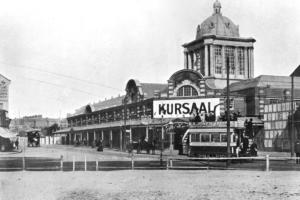
The Decline of the Kursaal
In
the
1960s
the
Kursaal
was
described
by
the
AA
as
“one
of
the
largest
and
best
equipped
leisure
and
entertainment
sites
in
Britain.”
By
the
1970s
the
splendid
pleasure
dome
was
a
shell.
The
famous
rides
disappeared
either
by
catching
fire
or
sold
off
to
the
Third World, the scrap metal man or the spare parts shed.
The
Kursaal
ballroom
played
host
to
many
musical
artistes
and
bands
since
its
opening
in
1901,
during
the
1970s
the
Kursaal
ballroom
became
well
known
as
a
rock
music
venue
hosting
famous
live
bands,
many
relationships
started
at
the
Kursaal.
Sadly,
the
Kursaal
had
been
in
gradual
decline
since
the
early
1970s,
the
amusement
park
closed
in 1973, and in 1977 the ballroom closed, with the main building finally closing in 1986.
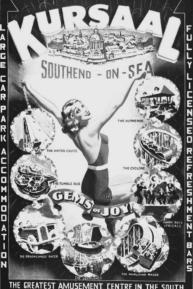
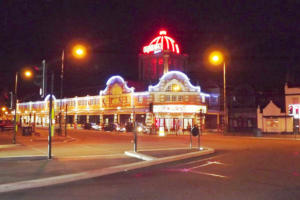
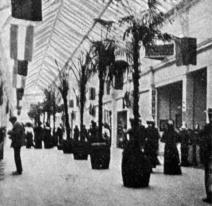
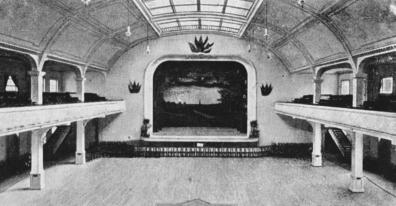
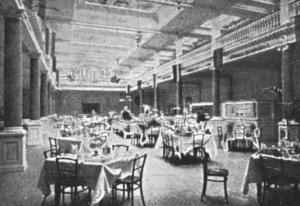

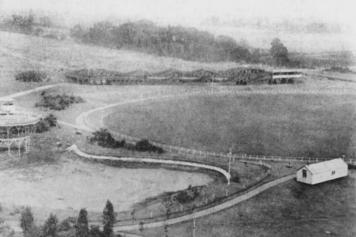
Luna Park
2012 Kursaal
Arcade
Ballroom
Dining Room
1898 Map Marine Park and Pleasure Gardens
1939 Kursaal Advert
c1901 New Kursaal Entrance and Palace
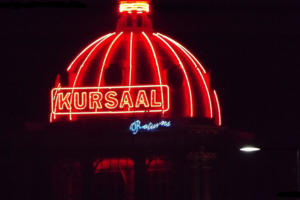
The Kursaal Returns
After
the
closing
in
1986
the
main
building
lay
derelict
until
1998,
when
the
Kursaal
building
reopened
after
redevelopment
by
the
Rowallan
Group,
the
Kursaal
now
housed new amusements, bowling alley, casino and a McDonalds.
The
amusement
park
was
later
redeveloped
for
housing
and
called
the
Kursaal
Estate.
After
the
refurbishment
of
the
main
building
and
opening
in
1998
the
first
to
close
was
McDonalds
in
2008,
then
in
2019
the
MFA
Bowl
went
into
administration
and
the
bowling
alley
closed,
the
Rendevous
Casino
closed
in
2020.
Only
a
Tesco
Express
store
remains.
2012 Kursaal Dome
Southend-on-Sea


The Kursaal Zoo
Southend's
foremost
entertainment
venue
needed
to
keep
the
offer
to
the
public
fresh
and
exciting,
which
is
why
in
1916
the
owners
decided
to
make
a
radical
move
away
from
the
theme
park
model
and
build
in
a
zoo.
The
first
of
its
kind
in
the
town.
Located
within
the
grounds
of
the
Kursaal,
cages
were
erected
ready
to
accommodate
their
new
residents,
amongst
which
would
include
tigers,
bears,
wolves,
jackals
and
many
other
interesting
animals.
The
site
within
the
grounds
was
formerly
a
tea
garden
and
the
cages
would
be
arranged
to
allow
the
anticipated
thousands
of
visitors
to
be
amazed
at
these
tropical
and
wild
animals
normally
seen
within a natural encyclopaedia.
The
Kursaal
Zoo
opened
to
the
public
on
10th
June
1916.
The
animals
arrived
a
week
earlier
much
to
the
excitement
of
local
people
as
animal
sounds
were
heard
moving
through
the
streets
of
Southend.
The
public
were
eager
to
inspect,
for
the
very
first
time
animals from around the world.
The
animals
which
Mr
C.
J.
Morehouse
arranged
to
have
on
exhibition
numbered
over
100,
and
were
known
to
consume
around
70,000
lbs
of
meat.
They
belonged
to
a
collection
from
Maidstone
owned
by
Mr.
Tyrritt
Drake,
who
had
developed
this
collection
as
a hobby called Cobtree Zoo. The collection was started in 1910, and was then thought to be one of the largest collections in England.
Some of the animals on show:
Australian
wild
or
dingo:
These
animals
in
their
native
country
do
enormous
amount
of
damage
by
killing
sheep,
not
merely
for
food,
but
also
for
sport.
Timber
wolf,
North
America:
The
largest,
finest,
and
fiercest
of
any
of
the
wolf
species.
Zebu
or
sacred
cow:
India,
used
in
carts
and
for
riding
purposes.
Syrian
or
Jacob's
sheep:
Supposed
to
be
the
kind
of
sheep
referred
to
in
the
Old
Testament.
Royal
cream
pony:
Only
two
studs
of
this
variety
that
existed
in
the
United
Kingdom,
one
of
the
property
of
HM
the
King
and
the
other
at
Horley,
the
property
of
Lord
John
Sanger,
Ltd.
Similar
ponies
were
always
used
by
the
late
Queen
Victoria
in
her
bath
chair,
the
"Royal
Creams"
used
on
all
State
occasions
are
similar
in
colour,
form,
and
with
the
same
peculiar
blue
eyes,
but
stand
15
to
16.5
hands
high.
Bhal
or
fighting
ram,
Northern
India:
These
are
the
only
pure-bred
specimens
in
England.
They
are
used
by
the
Rajahs
to
give
exhibitions
of
fighting
and
are
trained
for
the
purpose
in
the
same
manner
as
fighting
cocks
were
in
the
old
days
of
England.
Bennetts
wallaby
or
kangaroo,
Australia:
These
animals
are
easily
acclimatised
to
live
in
the
open
in
England,
and
under
such
conditions
will
breed
freely.
Griffin
vulture,
Spain:
These
birds
have
enormous
power
in
the
wing.
The
width
of
this
specimen
from
the
tip
of
one
wing
to
the
tip
of
the
other
is
9ft.
Crested
porcupine,
South-Africa:
The
largest
species
of
the
porcupine
family.
This
animal's
mode
of
defence
is
to
run
backwards
into
his
adversary,
inflicting
great
pain
with
its
quills.
Brown
bear,
'Jock’:
One
of
the
largest
if
not
the
largest
brown
bear
in
captivity.
Spotted
or
laughing
hyena,
'Squeaks,’
West
Coast
of
Africa:
Possessing
the
strongest
jaw
of
any
animal
in
the
world,
which
enables
it
to
crunch
up
even
the
jaw
bones
of
horses
with
ease.
This
specimen
is
extremely
tame.
Forest-bred
lioness,
'Queen
Alexandra,'
from
Abysinnia,
born
March
1909:
This
animal
as
a
cub
was
by
special
request
presented
to
and
caressed
by
HM
Queen
Alexandra.
She
had
been
taught
by
her
owner
to
perform
many
tricks.
Forest-bred
lion,
'Lami,'
from
the
Cameroons,
born
March
1911:
This
animal
was
brought
over
by
Miss
McLeod
on
her
return
from
her
journey
across
Central Africa. Raccoon, North America: These animals have the peculiar habit of washing their food in water before eating it.
A reporter from the Southend & Westcliff Graphic, who visited the zoo wrote:
On
entering
the
zoo
we
were
greeted
with
the
bleating
of
a
Sudanese
sheep
"The
noisiest
animal
in
the
show"
this
was
the
keeper's
comment
"More
noisy
than
a
lion!"
He
continued
to
bleat
noisily
while
we
passed
on
to
his
neighbour,
a
quiet
and
docile
deer,
and
next
to
her
was
a
beautiful
specimen
of
a
llama.
This
was
from
Peru
where
it
is
used
for
carrying
ore
from
the
mountains;
it
carries
a
weight
of
not
more
than
200
lbs
in
sacks
and
"strikes"
at
any
over-loading.
A
yak
and
a
fighting
ram
are
close
neighbours,
the
latter
and
one
other
are
the
only
animals
of
their
kind
on
exhibition
in
this
country.
A
beautiful
little
creature
is
the
wallaby,
with
its
handsome coat.
A
couple
of
ostriches
were
feeding
in
the
open,
and
after
admiring
the
beauty
of
their
plumage,
we
came
to
the
cages
containing
two
superb
specimens
of
the
king
of
beasts
-
a
forest
bred
lion
and
a
lioness.
The
former
has
a
magnificent
head
and
mane.
Though
he
was little inclined to display it, having only lately finished a meal, and being in no mood for anything else than to be drowsy.
A
succession
of
wonderful
specimens
of
nature's
handiwork
in
the
animal
world
next
met
our
view,
such
as
the
hyena,
with
his
restless
moving
up
and
down
the
cage;
bears
(one
of
which,
formerly
in
Bostock's
collection,
instantly
recognised
a
former
employee
who
is
now
an
employee
at
the
Kursaal),
a
panther,
wolves
and
so
forth.
The
panther
seemed
to
be
the
most
upset
of
all
the
animals
by
the
journey;
he
snarled
most
unpleasantly
and
would
only
venture
to
thrust
out
his
head
once,
at
the
same
time
displaying
a
beautiful
and
ferocious
looking
set
of
teeth.
when
his
food
was
first
placed
in
the
cage,
soon
after
his
arrival
at
Southend,
he
did
not
immediately
go
to
it,
but
when
he
thought
no
one
was
looking
he
went
with
a
bound
the
full
length
of
the
cage,
and
as
quickly
returned with it into his box.
The
birds
form
a
very
interesting
collection,
there
being
some
fine
specimens
of
the
eagle;
while
another
very
entertaining
department
is
that
consisting
of
the
freaks.
These
include
the
smallest
donkey
in
the
world,
standing
only
29
inches
high;
a
four
horned
ram.
"the
old
Nick
of
the
animal
world";
the
largest
guinea-pig
in
the
world,
weighing
seven
stone,
a
giant
rat,
a
three
legged
duck,
and
other
strange
and
wonderful
creatures.
Then
there
are
monkeys,
but
space
prevents
our
dealing
further
with
the
subject.
What
we
have
said
is
sufficient,
we
think,
to
whet
the
appetite
of
the
public
of
Southend
to
go
to
see
for
themselves
this
wonderful
menagerie which, through the enterprise of Mr. C. J. Morehouse, is now introduced to Southend.
What Happened to the Kursaal Zoo?
It
is
interesting
to
note
that
the
zoo
was
disbanded
at
the
beginning
of
the
Second
World
War.
There
was
a
distinct
fear
if
the
site
was
bombed
the
animals
could
escape
and
cause
mayhem
in
the
streets
of
Southend.
Unfortunately,
it
was
necessary
to
put
most
of
the
animals
down.
The
Kursaal
was
commandeered
for
the
war
effort
so
no
entertainment
was
on
offer
during
the
war
years.
Afterwards,
a new fresh holiday resort in Southend emerged and the thoughts of resurrecting a zoo had long been forgotten.

Website Info:
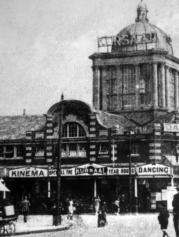
1949 Kursaal Advert
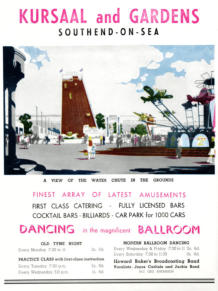
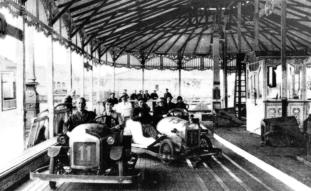
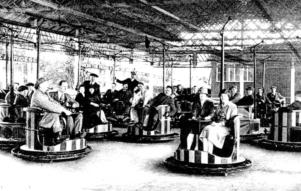
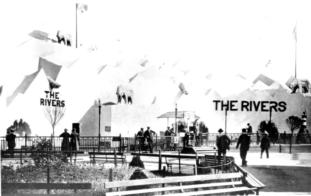
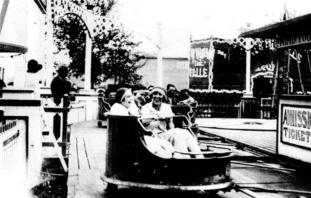
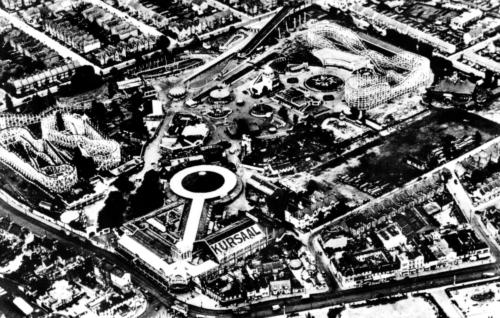
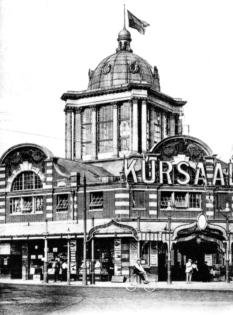
The Autodrome. Photo: Terry Herbert Collection
Dodge Ems. Photo: Terry Herbert Collection
The Whip. Photo: Terry Herbert Collection
The Rivers. Photo: Terry Herbert Collection
Kursaal Entrance. Photo: Terry
Herbert Collection
Aerial View of the Kursaal. Photo: Terry Herbert Collection
Rides and Attractions (excluding entertainment and functions held in the main building)
Aerial Flight. Air Sport. Al Capone’s Car. Alpine Ride. Arctic River Caves, a £10,000 superstructure from Earl's Court. Astley's Circus.
Autodrome. Bowl Slide. Brooklands Racer. Bumper Cars. Calypso. Caterpillar. Cyclone, a roller coaster and the largest of the
Kursaal's attractions. Dive Bomber. Eric the Whale. Figure of Eight Coaster. Ghost Train. Harton Scenic Railway. Jolly Tubes. Joy
Wheel. Kelly's House or Kelly's Kottage. Knock the lady out of bed. Laff In The Dark. Midget Mansion. Mighty Mouse. Miniature
Railway. Mont Blanc. Morehouse Galloper (The). Mountain Dipper. Never Stop Railway. Noah’s Ark. Petboats. Rotor. Seaplanes. Ski
Jump. Skids/Swirls (The). Stratosphere Rocket. Switchback Railway. Toboggan Slide previously Ice Toboggan. Tumble Bug.
Tumblers (The). Under & Over. Wall Of Death. Waltzer. Water Chute. Whip (The). Whirlpool. Whirlwind Racer. Wild Mouse. Zoo.
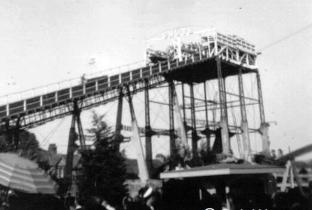
1948 The Chute
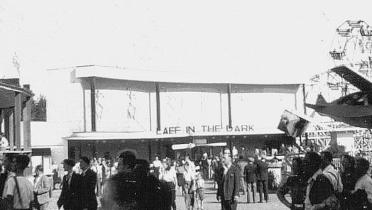
1949 Laff in the Dark
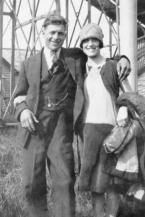
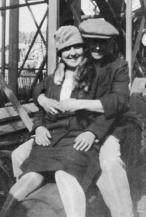
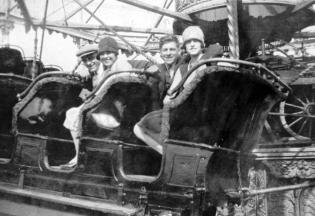
1930s Visitors Photo
1930s Visitors Photo
1930s Visitors Photo
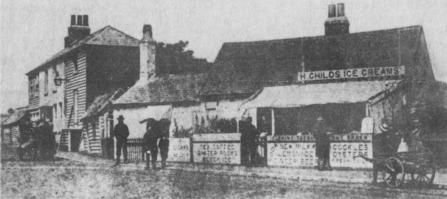
H. Childs Ice Cream Parlour and buildings which once stood on the
corner plot prior to the Kursaal Entrance and Palace

Southend-on-Sea’s No 1 History Website! Documenting The Town & The Townspeople
Now Incorporating The Sea Of Change Website
Unfortunate Endings
The heaviest man in the world at the time, Dick Harrow, aged 38, weighing 40 stones died while on show at the Kursaal. He served in
the Royal Artillery in the first World War and was of normal weight, but in 1920 began to put on weight and became so heavy he
could hardly move. A huge container-like coffin was made for his body and lifted on to a lorry by crane. He was buried in Sutton
Road cemetery in a huge grave, Cannon Gowing conducted the funeral in the early hours to foil morbid sightseers.
1977 Yvonne Stagg one of the famous Wall of Death riders took her own life. Yvonne over her career had broken many bones in her
body at least once, one instance she toppled 20 feet off the Wall and a 385lb motorbike landed on top of her, it wasn’t the Wall of
Death that reaped Yvonne, but her tangled love life. Gustov Kokos the father of her child was stabbed to death outside her front door
by a jealous lover. Yvonne never recovered from the shock.


SOUTHEND CITY
Chalkwell ▪ Eastwood ▪ Leigh-on-Sea ▪ Prittlewell ▪ Shoeburyness ▪ Southchurch ▪ Thorpe Bay ▪ Westcliff-on-Sea
































































